Whether you're a beginner gardener or a seasoned expert, there are some must-have garden tools that will not only make your life easier, but make your gardening experience a whole lot more enjoyable.
We take a look at what basic tools you should have in your shed, why they're useful, how to use them, and what you should look at when buying them.
1. Gloves
Number one for safety, comfort and overall gardening enjoyment! While not strictly a tool, gloves not only help keep your hands clean, but protecting your hands from sun damage, as well as cuts, scrapes and thorns, and any possible associated infection from such wounds, makes a lot of sense. It's important to choose gloves that fit properly, otherwise they can cause blisters or they can accidentally slip off and cause an accident.
There are different types of gloves, some of which are suited to particular jobs, but there are plenty of good all-round options available if you're on a tight budget.
- Lightweight cotton gloves - useful for lightweight garden jobs and potting; also help protect your hands from the sun.
- Leather gloves - suited to heavier gardening work and are more hard-wearing than other gloves. Ideal for when you are pruning and grabbing heavy branches, or doing landscape work with stones, rocks, or pavers.
- Coated gloves - great all-purpose gloves that are constructed of breathable fabric that is coated in latex or other material to provide good grip and a cut and puncture-resistant surface. They are flexible which allows for greater manual dexterity, which means they are easy to wear and are great for jobs like weeding or potting.
- Reusable, or disposable nitrile, latex or vinyl gloves - can be very useful when working with seeds or seedlings as they fit more closely and allow you to feel what you are doing while still protecting your hands.
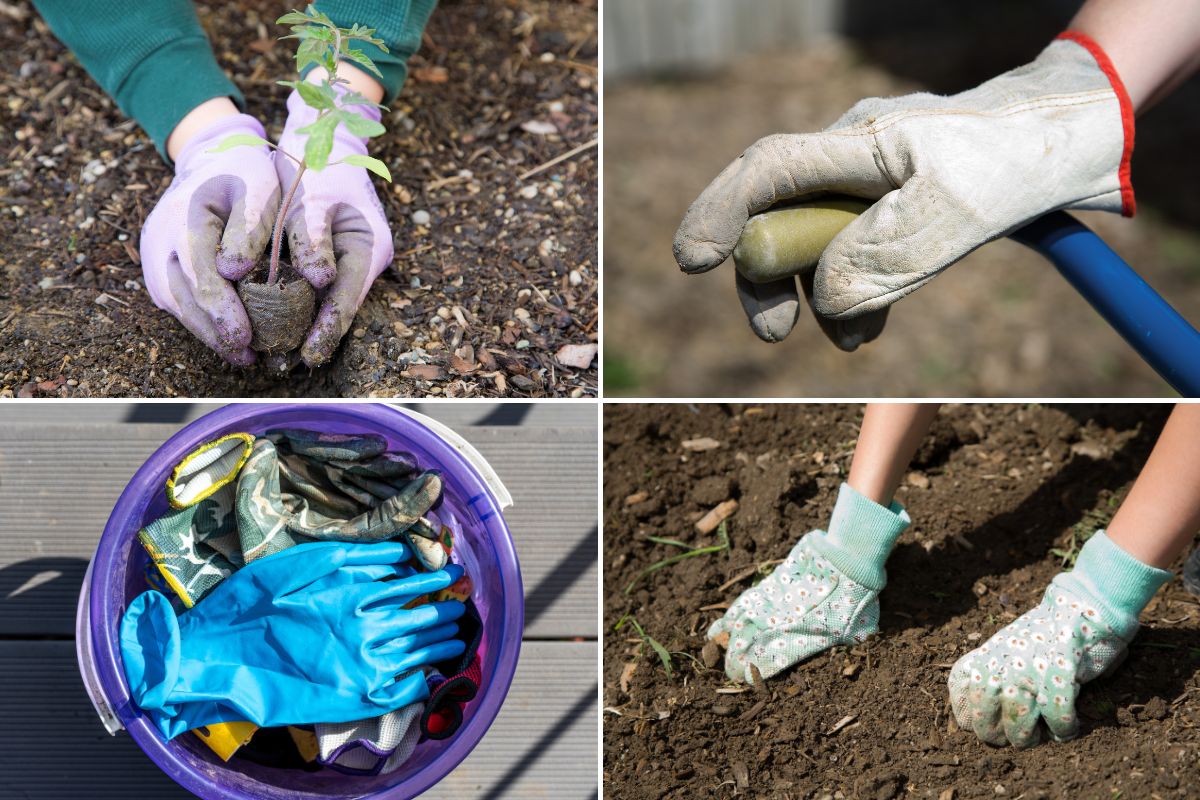 Clockwise from top left: coated gloves, leather gloves, cotton gloves, nitrile gloves
Clockwise from top left: coated gloves, leather gloves, cotton gloves, nitrile gloves
2. Spade
A spade is a spade - well, technically yes, in terms of what it does and is used for, but there are a few things to consider before adding one to your 'gardening essentials' collection.
Spades come in all shapes and sizes and are designed for slightly different purposes. For example, shovels have a head at a slight angle to the handle and are ideal for digging shallow holes and moving soil, while spades usually have smaller, squarer heads in line with the handle and have a sharp cutting edge that makes them better for digging precise holes, cutting through compacted soil, and for edging garden beds.
Shovels often have long handles, and either a square or round mouth. Round-mouth shovels usually have a smaller head and are used for digging, while the square-mouth shovels are not designed for digging but more for scooping up soil or mulch.
Spades and shovels are often composed of different materials and also have different length handles depending on their purpose. They are usually made with stainless steel or carbon steel blades and wooden handles, or may be entirely made of steel.
Choose a spade (or shovel) that you can manage, and choose the right one for the right job. What this means is that while you may want to buy a top-of-the-range stainless steel spade, it may simply be too heavy for you. It might feel fine when you heft it once or twice while you're in the shop, but think about using that same spade over and over again in the garden, and with a load on it, because that will also add weight to what you are lifting or moving.
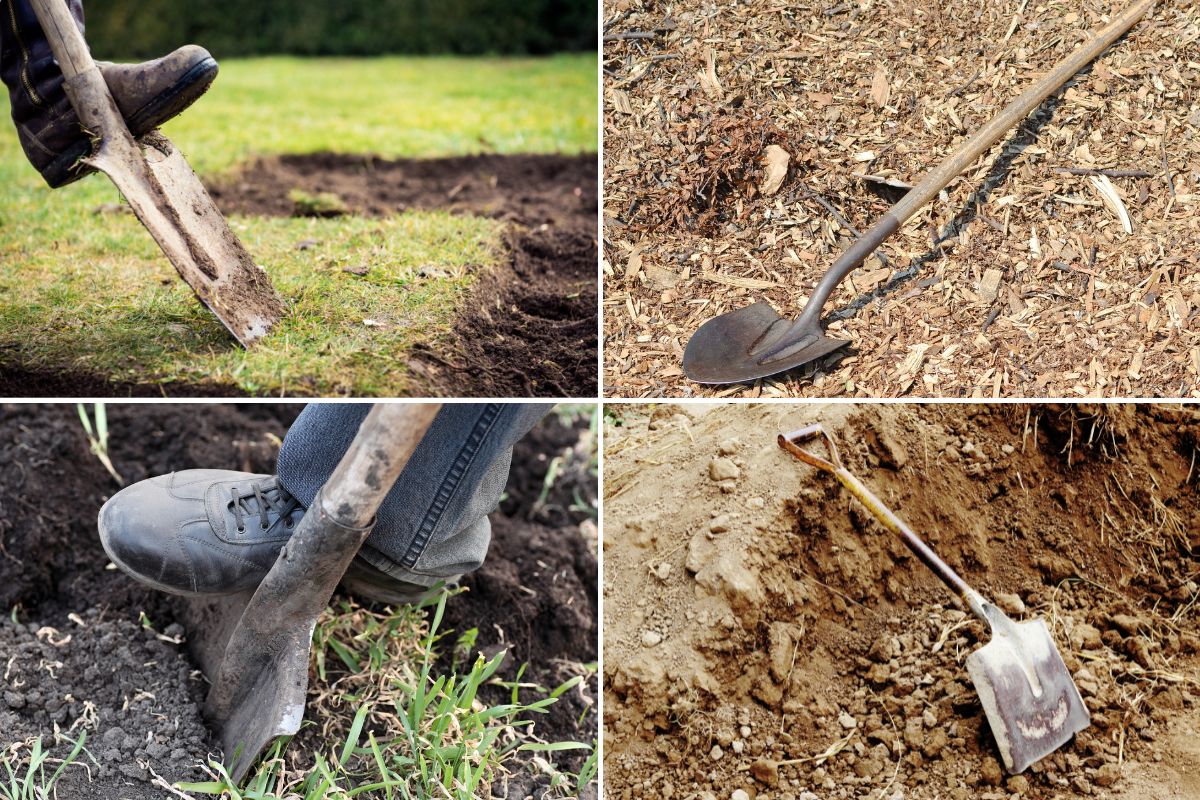 Spades (left) have smaller heads and a sharp cutting edge; Shovels (right) can have rounded or square heads
Spades (left) have smaller heads and a sharp cutting edge; Shovels (right) can have rounded or square heads
3. Fork
A good sturdy garden fork is ideal for cultivating soil, and for breaking up very compacted soil prior to digging a hole with a spade.
Forks generally have four or five tines which may be slightly curved or straight. Straight square tines are stronger and better for digging into compacted soil, while slightly curved tines are useful for scooping mulch and turning compost. As with spades, forks can be all steel, or a combination of wood and steel.
4. Rake
A rake is simply a long wooden handle with a metal or plastic comb at the end. You'll come across two main types of rake; a grass rake and a landscapers rake.
Grass rakes have a fan-shaped head, made of either plastic or metal, and are used for easily collecting debris like leaves and lawn clippings into a pile so that you can load it into a waste bag or wheelbarrow. A landscaper's rake is more robust and has a metal head with several short, solid metal tines which are ideal for spreading and levelling soil and sand. A landscapers rake is often used for smoothing the surface of a vegetable patch prior to sowing with seeds.
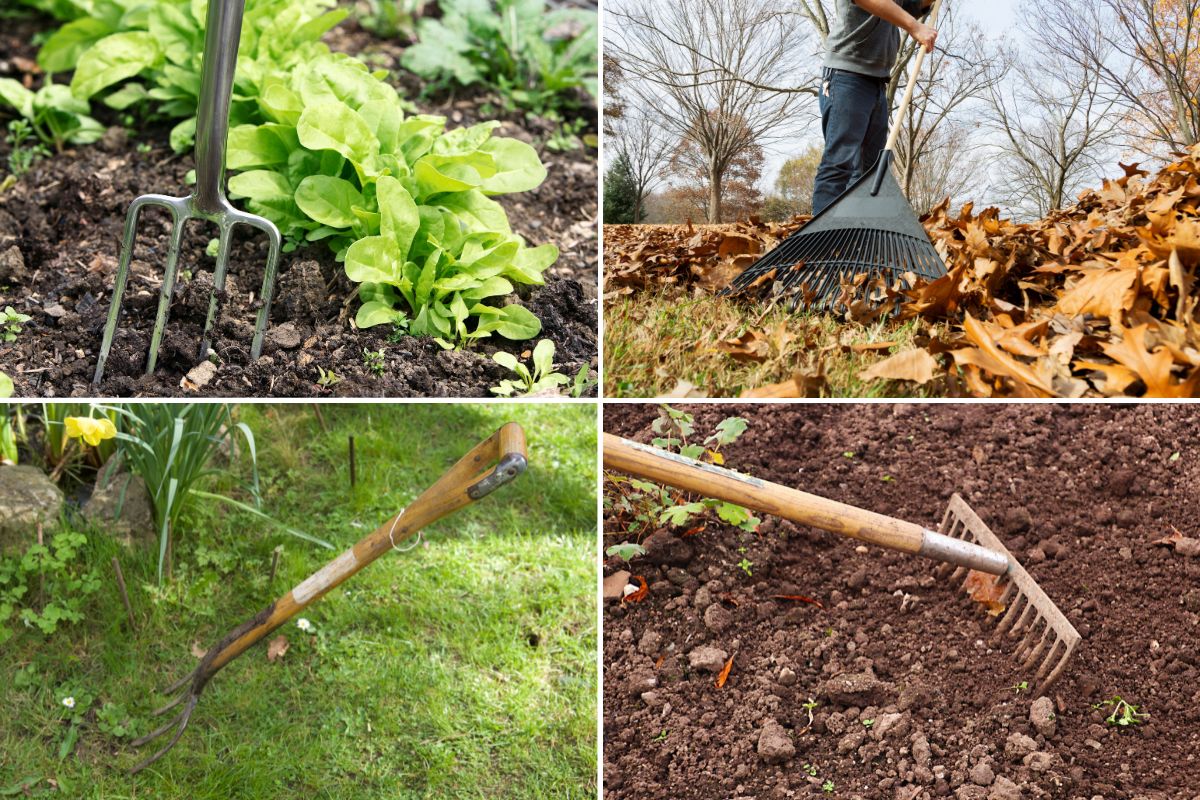 Forks (left) have four or five solid tines; Rakes (right) can be used for raking up leaves or levelling soil before sowing seed
Forks (left) have four or five solid tines; Rakes (right) can be used for raking up leaves or levelling soil before sowing seed
5. Hand Trowel
For smaller gardening jobs, a hand trowel is a must. It is basically a small spade, so is the perfect tool for digging small holes. It can also be used to create drills for planting seeds in the vegetable garden. A trowel is also ideal for gardening in planter boxes, containers and pots.
6. Hand Fork
Like a hand trowel, a small handfork is useful for loosening small patches of dirt and preparing the soil for planting. It can also be used to loosen the soil around weeds to make it easier to lift them out.
7. Weeder
Along with a hand trowel and hand fork, a weeder rounds out the trio of essential hand tools. Designs vary but a weeder is usually a two-pronged tool that is used to dig under a weed so that you can lever it out, roots and all. These types of weeders are constructed with rust-resistant stainless steel prongs and a wooden handle.
Weeding knives are useful for removing weeds between pavers, along garden edging and deep cracks, and from under rocks. If you're just starting out with gardening and don't want to splash out on a special tool just yet, or if you don't have many such areas to weed, then an old sturdy kitchen knife could also do the job.
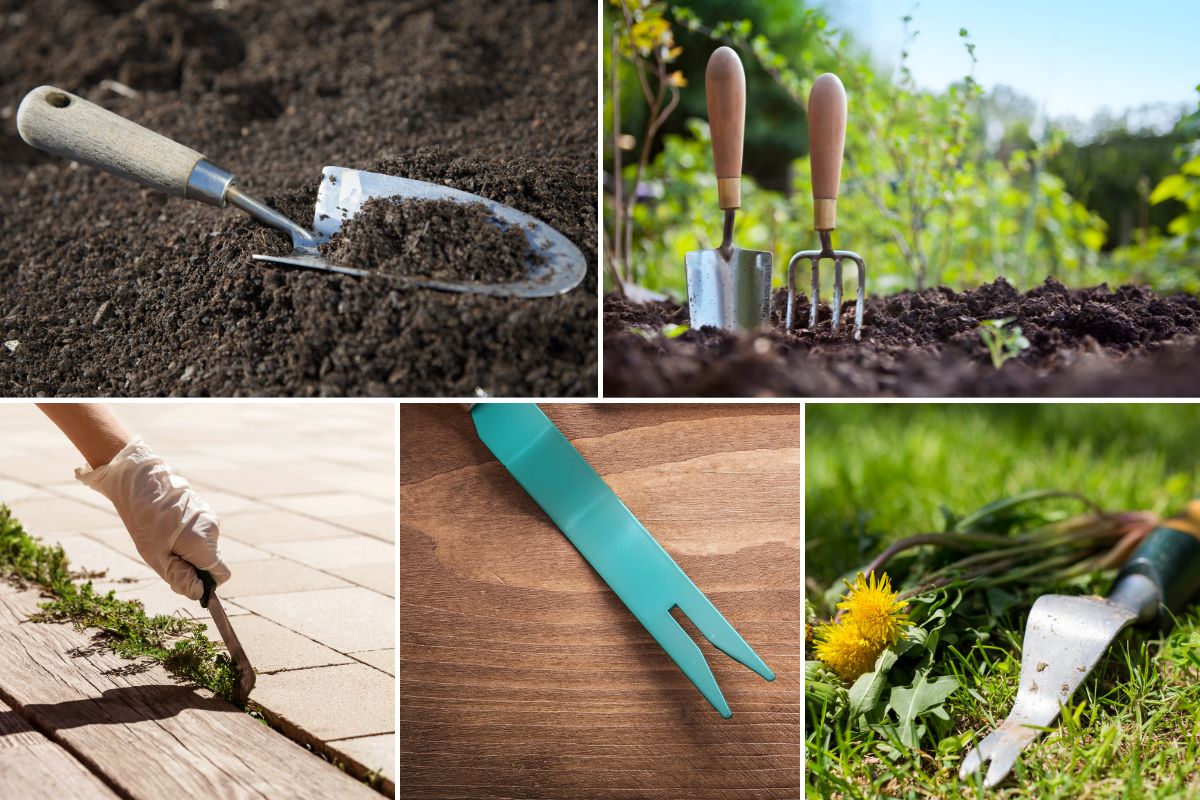 Small hand tools like trowels, forks, weeders and weeding knives are great for small gardening jobs
Small hand tools like trowels, forks, weeders and weeding knives are great for small gardening jobs
Weeds can also be removed using small hand-held hoes and are great for weeding smaller veggie patches or raised garden beds. Hoes work by pushing or dragging the head of the hoe at a shallow angle just beneath the surface of the soil. This action cuts the stems of larger weeds, while smaller weeds are completely dislodged and dragged to the surface, where they can be left to wither and die in the sun.
For larger garden areas, you can use either a Dutch hoe or a draw hoe to remove weeds. A Dutch hoe has a shallow angled blade with a front cutting edge that is swept with flowing movements over the surface of the soil to slice the tops off weeds. A draw hoe has a wider blade set at right angles to the handle and is used by drawing the hoe towards you, and slicing off weeds. These longer handled implements make quick and light work of weeding in between rows of vegetables.
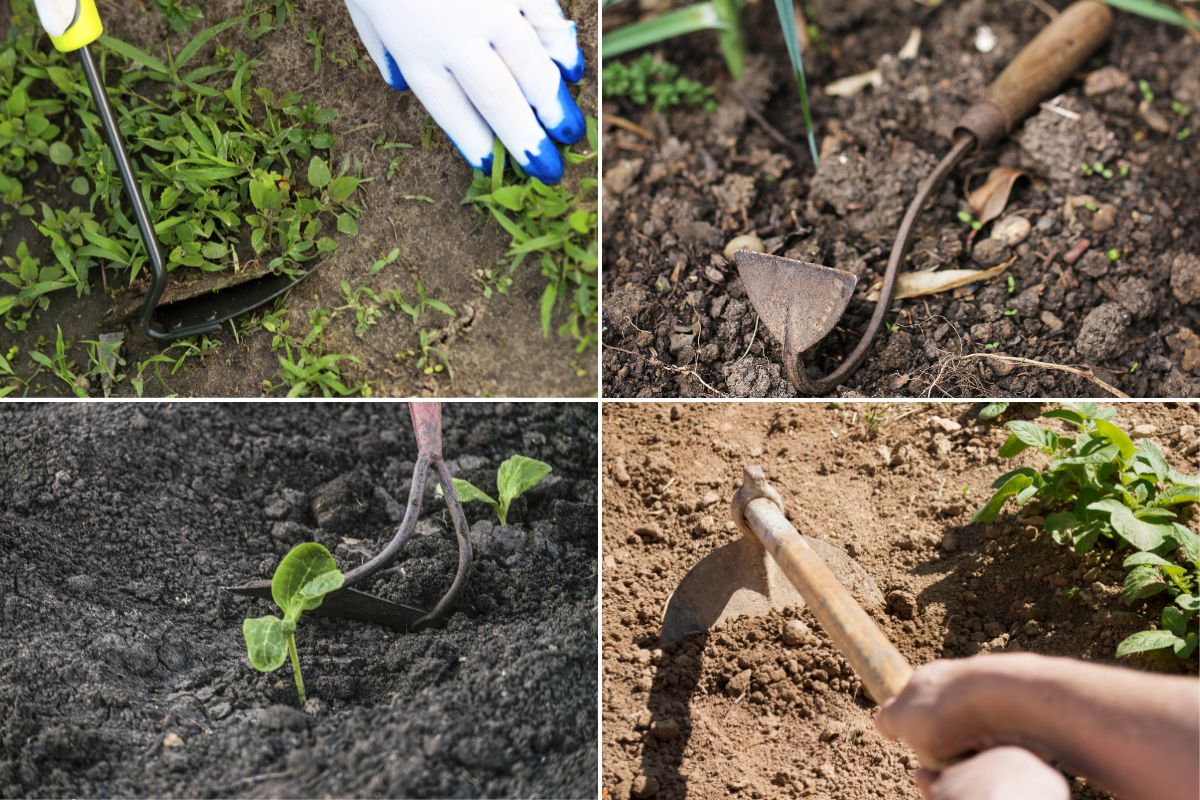 Hand-held hoes (top) and Dutch (bottom left) and draw hoes (bottom right) are ideal for getting weeds out of veggie patches
Hand-held hoes (top) and Dutch (bottom left) and draw hoes (bottom right) are ideal for getting weeds out of veggie patches
8. Secateurs
Next to gloves, secateurs are the most useful, and possibly the most-used item when gardening, and nothing makes you feel more like a real gardener than when you have your gloves on and a pair of secateurs in your hand!
Secateurs are small hand-held pruning shears or clippers and are used for pruning, cutting and trimming. There are different types of secateurs and snips, and they come in a range of sizes and handle types as well, so choosing the correct one for the job will make your cutting or pruning job a lot easier.
Bypass secateurs work like a pair of scissors and have two blades that look a bit like a parrot beak. The blades pass next to each other, cutting whatever comes between them. They are used for cutting and pruning smaller stems, thin young branches, and fresh green growth.
Anvil secateurs have blades that do not overlap and work like a knife on a chopping board. This crushing action can tear, damage or bruise soft growth, so anvil secateurs are best used for cutting or chopping up finger-thick branches and solid or dead wood.
Smaller lightweight snips are useful for cutting and deadheading flowers, as well as harvesting your veggies and fruit.
When buying secateurs, choose the best and most comfortable ones you can afford. They are a worthy investment especially if you take good care of them by cleaning, sharpening and adjusting the blades regularly. They will make your cutting and pruning much easier and more pleasurable, and will last you a lifetime.
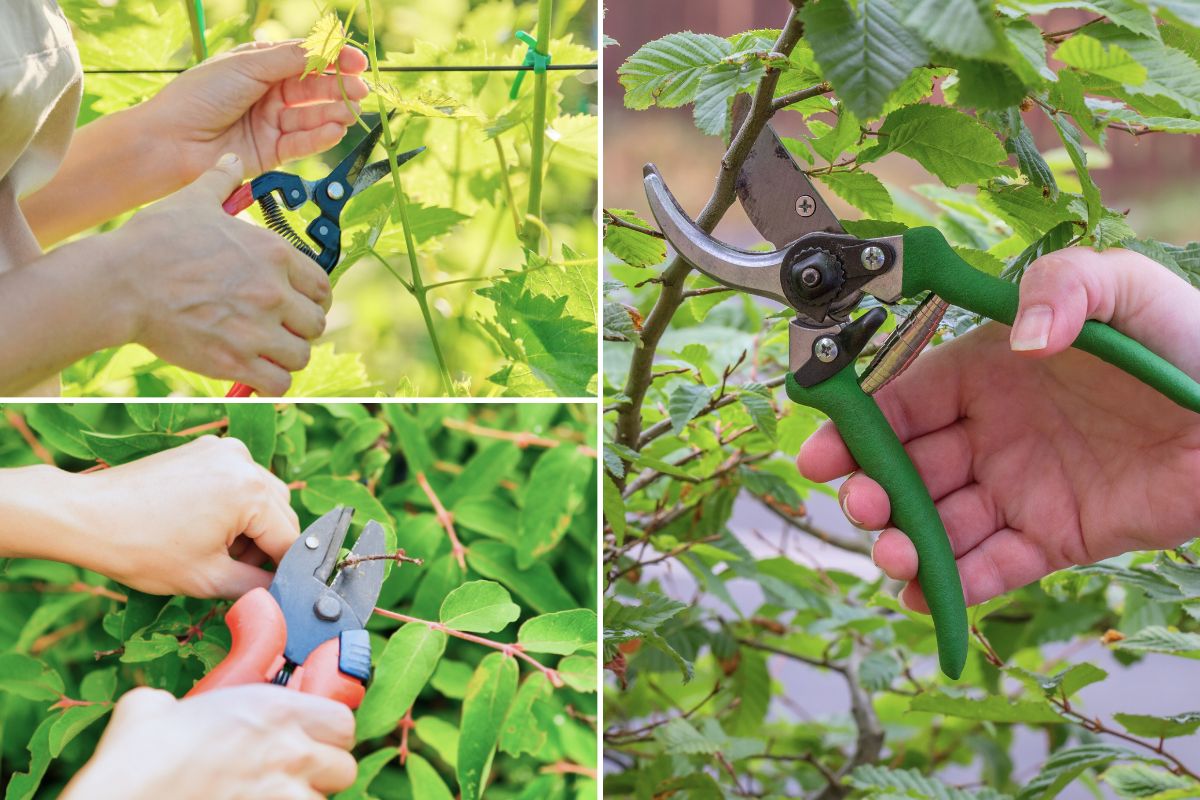 Lightweight snips, anvil secateurs, and regular secateurs are suited to a variety of different cutting jobs in the garden
Lightweight snips, anvil secateurs, and regular secateurs are suited to a variety of different cutting jobs in the garden
9. Watering Can
Once you've planted your seeds, seedlings, or young plants, you will need to give them water to help get them established and also to keep them alive long-term.
A watering can is a portable way of getting water to your plants, and is a container with a handy spout so that you can get water exactly to where you need it. Watering can spouts can also be fitted with a rose which is a closed, perforated funnel-shaped gadget that slows the flow of water as it comes out of the watering can spout. It allows you to sprinkle water gently over your new plantings, so that you don't wash your seedlings or compost away.
Plastic watering cans are lightweight and come in many different sizes and shapes. Galvanised metal watering cans may be a bit heavier but can be more long-lasting as they are more robust than plastic watering cans.
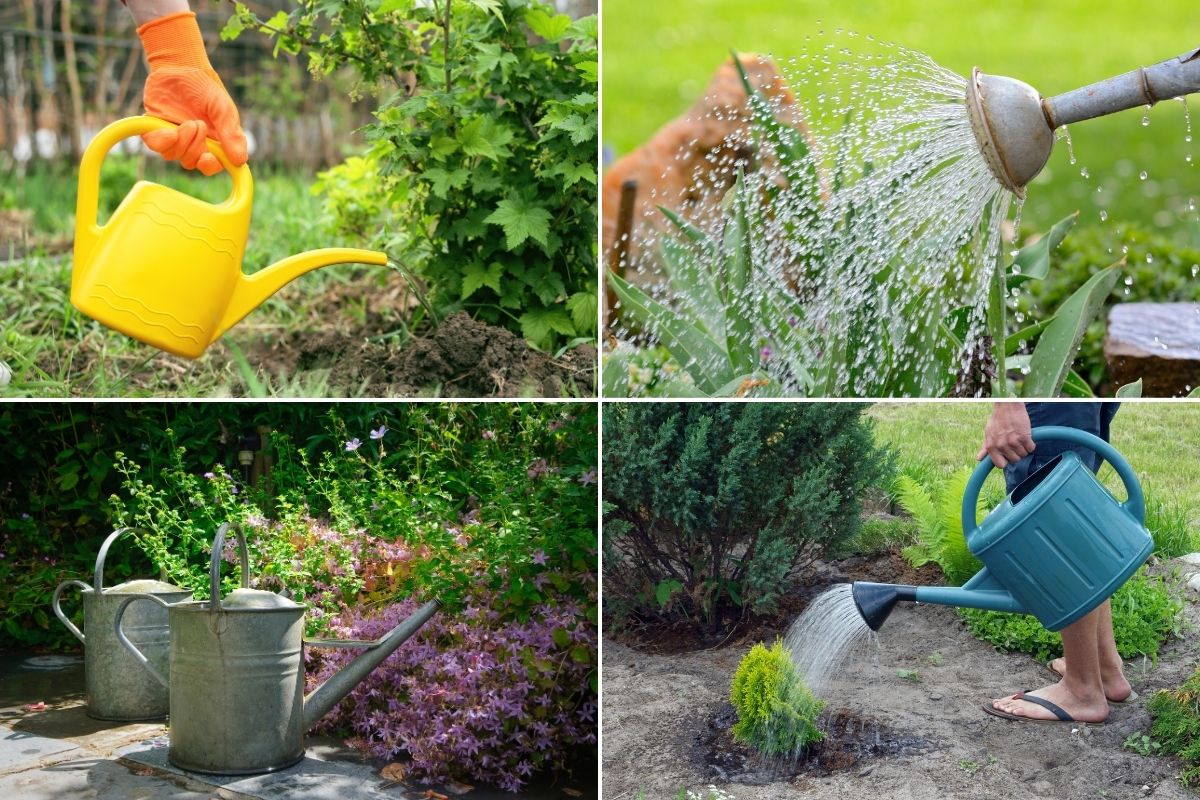 Watering cans deliver water right where you need it and a rose attachment delivers a gentle sprinkle of water
Watering cans deliver water right where you need it and a rose attachment delivers a gentle sprinkle of water
10. Wheelbarrow, Bucket or Trug
If you have a reasonably sized garden, then a wheelbarrow is ideal for moving large piles of soil or mulch around, or taking your garden clippings and pruning over to your compost heap. They come in a variety of different sizes and load capabilities, and while the ones we are most familiar with have a single wheel at the front, models with two wheels and a wider axle can offer more stability over rough terrain. A wheelbarrow is also very handy for transporting your larger garden tools and equipment around your garden.
If you're gardening in a courtyard or on a balcony, or if you have a small garden, then you may not need a wheelbarrow at all. However, you will still need something to collect your clippings and prunings, and to carry your tools around, so in this case a bucket or trug is ideal.
Buckets can be plastic or metal and can be used to carry all sorts of things, from water and soil to your tools and your veggie harvest. Plastic buckets are lightweight and cheap to buy, but they can be flimsy and may break down quickly when used outdoors and exposed to sunlight.
While galvanised metal buckets can be heavier and more expensive at the outset, they have other advantages. They are sturdier and more long-lasting than plastic, so are good for carrying things like rocks and pointy objects as they won't damage the bucket as easily. An added advantage is that if you live in a bushfire-prone area, they won't melt like a plastic bucket should you need to use it to carry water to put out a fire.
Trugs are traditionally shallow oblong baskets made of wooden strips used for carrying flowers and garden produce. Nowadays, the name 'trug' is also applied to large open plastic tubs with handles and sometimes go by being called tubs, tubtrugs, or simply trugs. They are generally larger than a bucket which makes them very useful in the garden as they can be used to collect prunings and clippings, as well as carting water or tools.
***
With these ten essential tools in your shed you can't go wrong - you'll enjoy gardening a whole lot more, and if you aren't already, you'll be an ace gardener in no time at all!
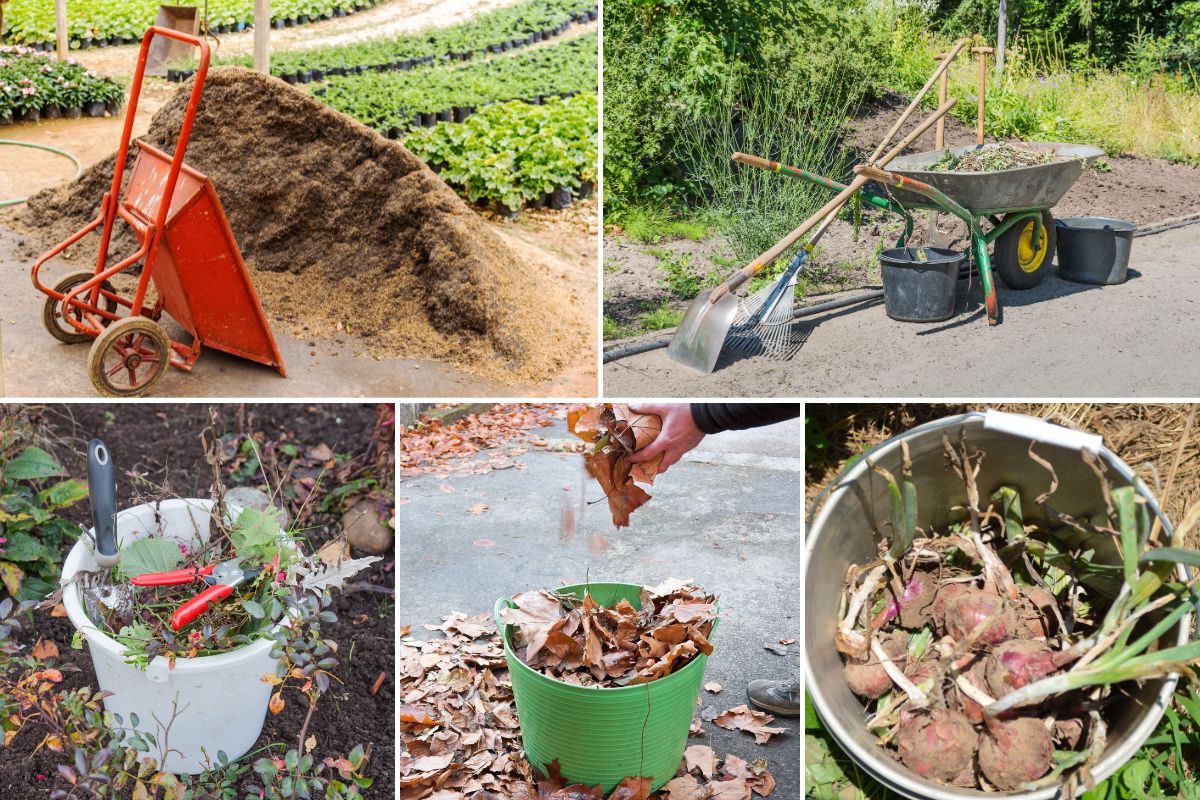 Wheel barrows, buckets and trugs are useful for carrying, shifting and moving things around the garden
Wheel barrows, buckets and trugs are useful for carrying, shifting and moving things around the garden





